Key takeaways:
- Ethics in street photography involve balancing artistic vision with respect for subjects, emphasizing the importance of consent and dignity.
- Building trust with subjects can transform photography into a meaningful exchange, enhancing storytelling and respect.
- Observing individuals without intruding and engaging in conversation can lead to more authentic and profound imagery.
- Personal interactions, even simple gestures, can significantly impact the comfort level of subjects and the quality of the resulting photographs.
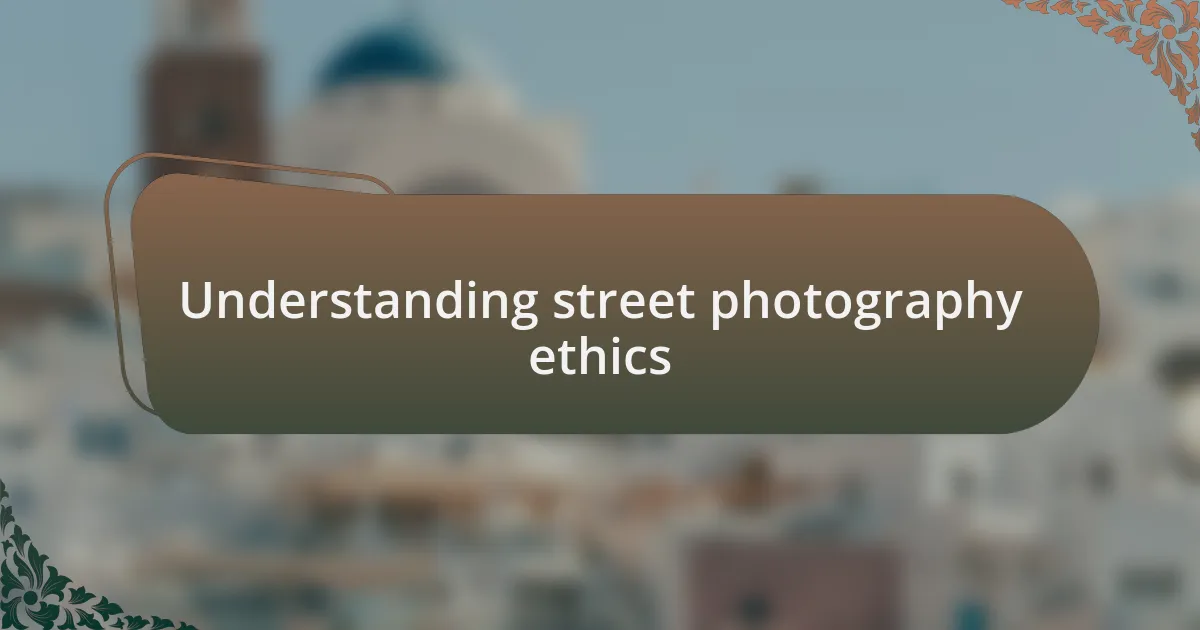
Understanding street photography ethics
When I first ventured into street photography, I grappled with the idea of consent. Is it ethical to capture someone’s candid moment without their permission? I remember photographing a spontaneous street performance and feeling a rush of excitement. Yet, I also wondered about the stories behind the faces I was capturing. This tension is a fundamental part of street photography ethics, pushing photographers to consider the impact of their work beyond the frame.
Street photography, in its essence, is about storytelling. Each image can evoke emotions, provoke thoughts, or spark conversation. I vividly recall a moment when a stranger approached me after I had captured his portrait. He expressed gratitude for showing a side of himself he often felt invisible. This interaction highlighted the power of street photography to connect us with diverse narratives, making it vital to approach our subjects with respect and sensitivity.
Furthermore, discretion plays a significant role in navigating these ethical waters. I’ve often found myself blending into the environment, observing without intruding. There’s an artistry in capturing life as it unfolds while remaining invisible. But I also ask myself, at what point does the capture become an invasion? Balancing the artistic vision with the empathy toward subjects is what truly defines street photography ethics.
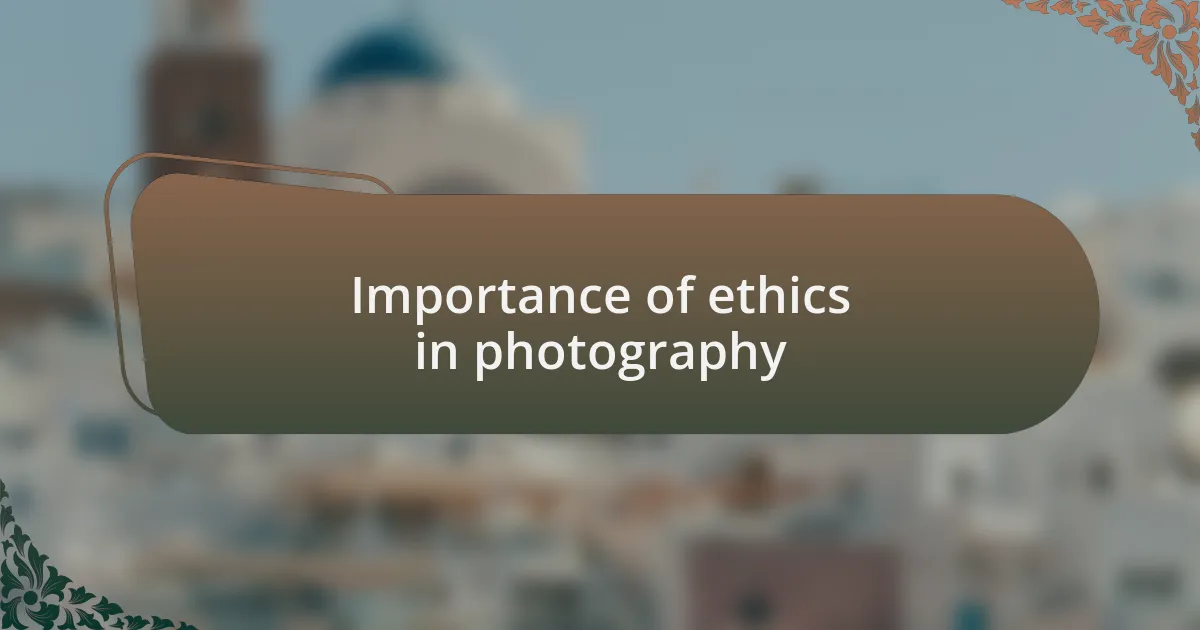
Importance of ethics in photography
Ethics in photography isn’t merely a set of rules; it’s a guiding principle that shapes our connection to our subjects. I recall a moment when I hesitated to photograph a homeless man on the street. As I raised my camera, I wondered if capturing his image would strip away his dignity. That moment reminded me that with each click, I hold a responsibility; the stories I tell can either uplift or exploit.
Moreover, ethical considerations remind us that our photographs can influence public perception. I was once at a protest where I photographed activists passionately voicing their concerns. Later, I reflected on the responsibility of presenting their passion authentically. Would my framing portray them as heroes fighting for justice or merely as faces in a crowd? These choices are significant, and they highlight the moral weight every photographer carries.
Building trust with our subjects can transform the interaction from a fleeting moment to a meaningful exchange. I once approached a group of street musicians and asked if I could take their pictures. They welcomed me, sharing stories that added depth to my shots. This experience underscored how ethics in photography fosters relationships, enabling storytelling that respects the individuality of each person captured. Isn’t it empowering to think that our art can build bridges instead of dividing lines?
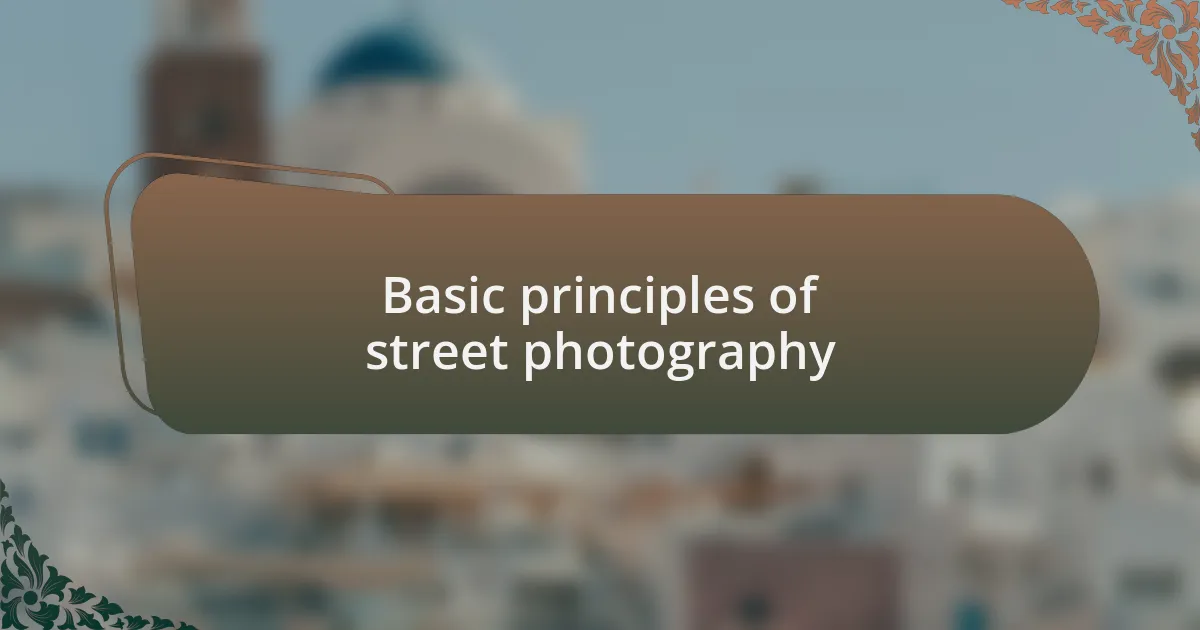
Basic principles of street photography
Capturing candid moments in street photography requires understanding the balance between being observant and intrusive. I remember a vibrant street festival where I wanted to photograph a couple dancing joyfully. Instead of snapping away, I paused to enjoy the moment, realizing that true spontaneity often emerges when subjects feel at ease. Isn’t it fascinating how sometimes the best images come from simply being a present observer rather than an eager photographer?
Another fundamental principle is respecting a person’s space. During a city walk, I encountered a woman lost in thought, sitting on a park bench. Instead of immediately raising my camera, I took a moment to gauge her comfort level. As I moved a bit further back, her relaxed demeanor transformed my shot from a mere candid to a story of solitude. These subtle gestures can be the difference between a moment captured authentically or one that feels forced and uncomfortable.
Lastly, cultural sensitivity plays a crucial role in street photography. When I visited a neighborhood celebrating a local holiday, I was mindful of their customs and traditions. I approached individuals with an open heart, eager to learn rather than just photograph. Engaging in conversation before taking their pictures not only enriched my work but also cultivated respect. Don’t you think that building these connections leads to more profound and meaningful imagery?
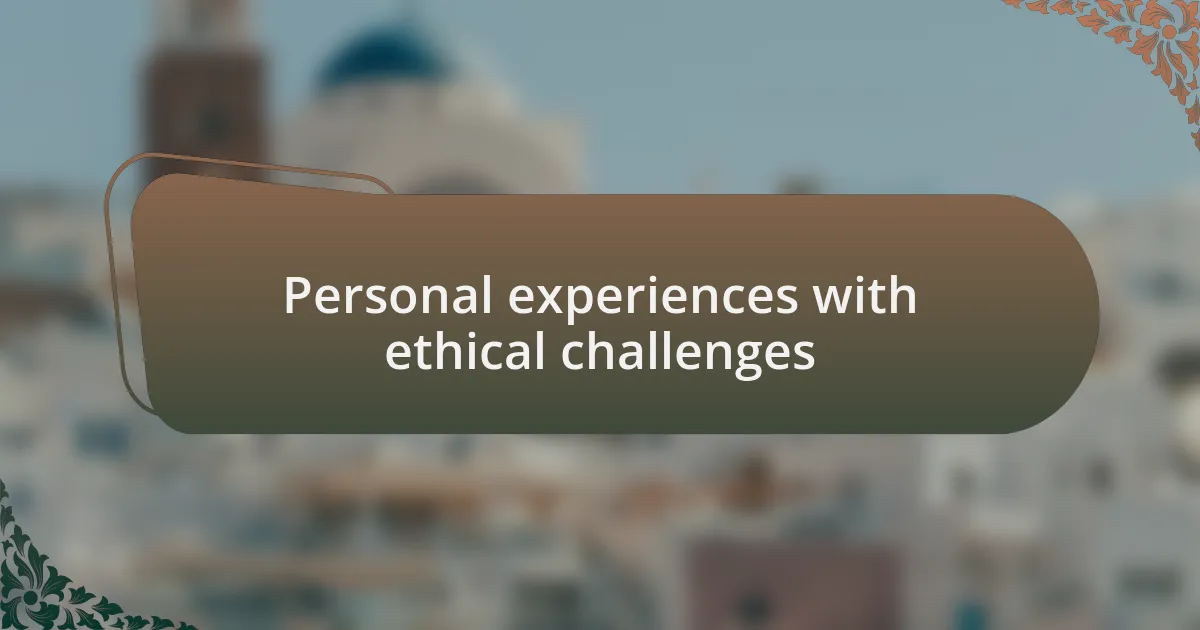
Personal experiences with ethical challenges
During a recent street photography excursion, I found myself at a bustling marketplace where vibrant colors and animated expressions filled the air. I spotted a vendor passionately explaining her craft, but instead of capturing the moment, I hesitated. What if she didn’t want her image taken? This pause led to a heartfelt exchange, where my respect for her boundaries resulted in a mutual understanding. In the end, I left with a powerful portrait that reflected her spirit and a deeper connection to the community.
Another time, I was photographing a group of teenagers engaged in a lively game of street soccer. The atmosphere was electric, yet I felt a twinge of uncertainty. Would taking their picture intrude on their fun? I decided to ask if I could capture their energy. When they agreed, I felt an incredible sense of relief and appreciation. This simple gesture transformed an ordinary moment into something shared and authentic.
I also remember a particular encounter with an elderly man sitting alone on a bench, watching the world go by. His eyes spoke stories of a lifetime, yet I struggled with whether to approach him. After a moment of contemplation, I introduced myself and asked if I could take his photo. The smile on his face was worth the risk; in that moment, I learned that sometimes, ethical challenges can lead to authentic, touching moments that truly reflect our shared humanity. Have you ever faced a similar dilemma in your photography journey?
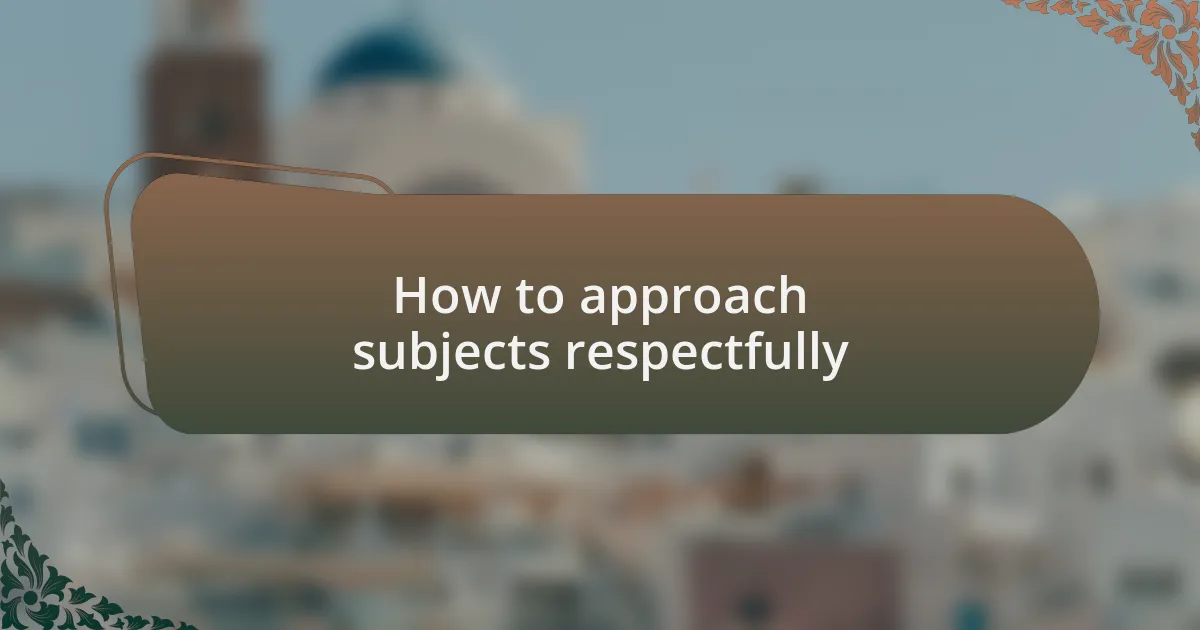
How to approach subjects respectfully
When approaching potential subjects, I always consider the power of a simple smile or greeting. I remember one afternoon at a local festival, I noticed a group of children playing joyfully with balloons. Instead of immediately lifting my camera, I took a moment to engage them with a friendly wave. The moment I connected with them, I felt their openness grow, and they welcomed me to capture their laughter. Wouldn’t you agree that establishing a rapport can make the difference between a candid shot and an awkward intrusion?
In another instance, while exploring an urban neighborhood, I spotted a woman peacefully reading on her porch. Rather than snapping a photo from a distance, I approached her and complimented her book choice. This small interaction led to a delightful conversation where she shared her thoughts on literature. Gaining her consent made me more comfortable capturing her portrait, which ended up being one of my favorites. Isn’t it fascinating how a genuine exchange can preserve a moment that feels both respectful and intimate?
Sometimes, I reflect on the significance of body language in these encounters. I recall a time I came across a street musician pouring his heart into a song. He was deeply focused, immersed in his art. Instead of barging in, I stood back and observed for a while. Sensing his energy, I approached slowly, making sure my intentions were clear. By acknowledging his dedication, I not only earned his trust but also documented a moment reflective of his passion. This experience reinforced that respect and timing are crucial in street photography, don’t you think?